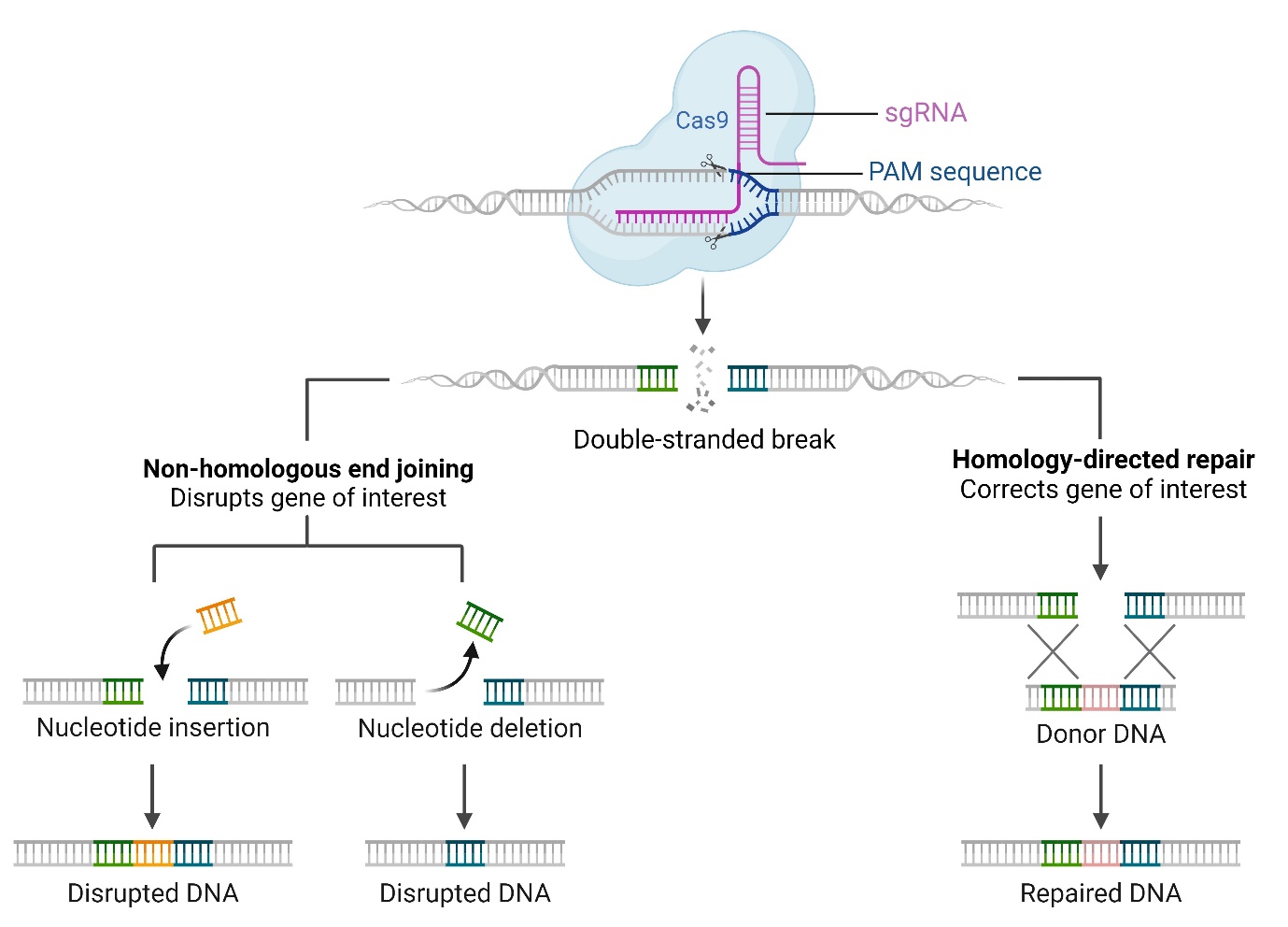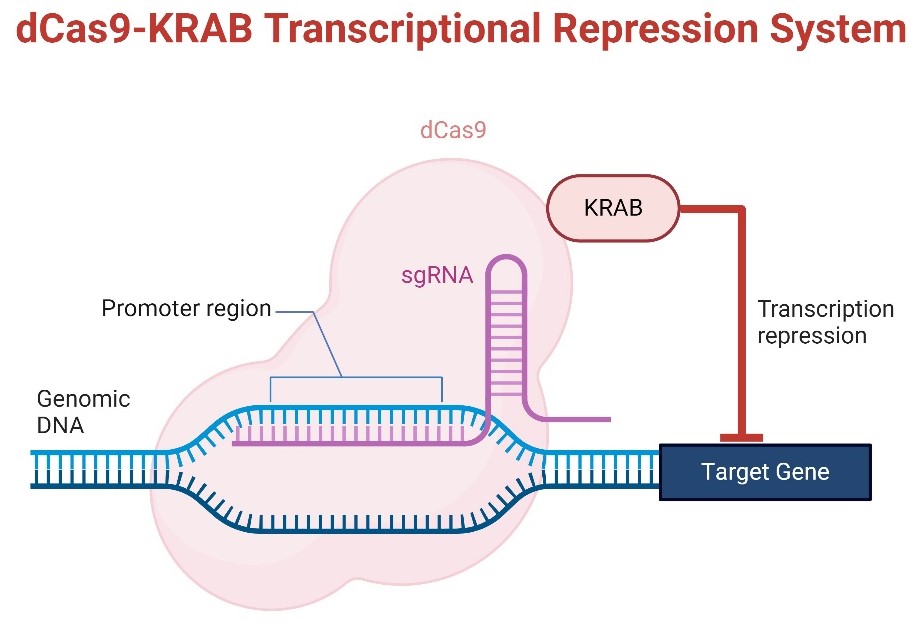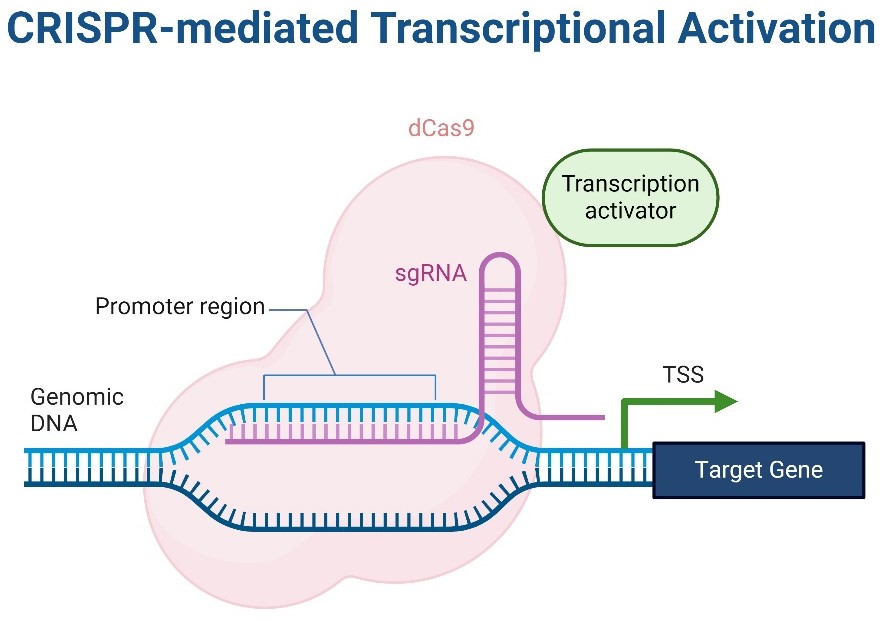CRISPR Knockout
By inactivating specific genes, researchers can study the effects of gene loss, which is critical to model diseases arising from gene deletions or loss-of-function alterations. This method is less suited to long-term studies of essential genes as knocking out essential genes can prove lethal to the cell.

CRISPR Interference (CRISPRi)
Transiently reduces or knocks-down gene expression enabling researchers to study diseases caused by reduced gene function. This is accomplished by using a catalytically inactivated dead Cas9 to a transcriptional effector such as the repressive KRAB domain which leads to a downregulation of gene expression via transcriptional repression. Unlike traditional CRISPR knockout, this method is suitable for studying essential genes as the effects are only temporary.

CRISPR Activation (CRISPRa)
Enhances gene expression by employing programmable transcription activators that recruit RNA Polymerase and other important co-factors, allowing researchers to study diseases caused by gene overexpression or gain-of-function mutations. When dCas9 is fused to a single or several transcriptional activation domains (e.g., MS2, MPH, SAM etc.), it leads to the increased expression of the desired gene product.

